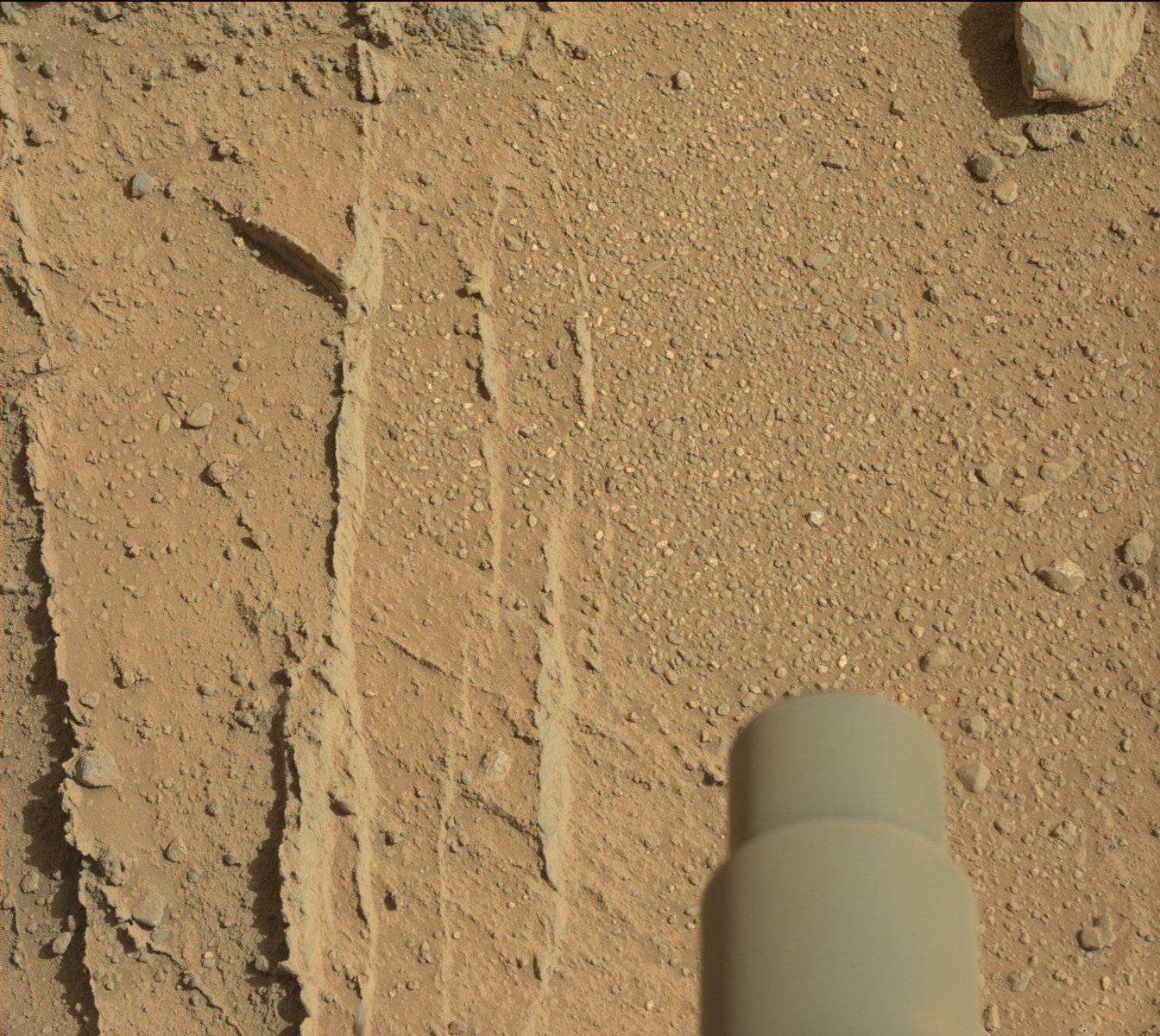Since my last post (sol 371), Curiosity has travelled more than 500m, bringing it to the first designated 'waypoint' on the road to Mount Sharp's base. It has been more than three weeks of almost non-stop long drives thanks to the rover's AutoNav system (activated in August last month) which allows the rover to generate 'terrain meshes' and depth maps (with the help of its stereoscopic navigation cameras) of the area in front of it and then use that information to guide itself around hazards. This helps the rover to navigate herself even to areas have not been scrutinised by human drive planners. That's the feature in this week's edition of the Curiosity rover report video which does a pretty good job of explaining the whole shebang:
The result; drives that sometimes go beyond the 100m mark (the longest was on sol 385 when the rover drove 141m), allowing a lot terrain to be covered. Compared to previous generations of Mars rovers like Spirit and Opportunity, Curiosity is a speed demon. That drive put the rover on top of a small rise dubbed 'Panorama point', still 75m from the first major stop over point in the trek.
Darwin is certainly an interesting place as evidenced by this Mastcam view showing what appears to be mineral veins; these are quite common back at the Glenelg area and hint at yet more evidence of past hydrological activity. We'll probably be here for a sometime before its back to driving.
Postscript note:
During the execution of blind observations (science activities that the rover team programs without knowing precisely the state of the vehicle after a drive, in this case, the sol 396 drive) ChemCam and the Mastcam made observations of the Andromeda galaxy and the star Sirius at the night to test out the instruments in preparation of observing the comet ISON which is fast approaching the inner solar system for a late year spectacle (that's IF it turns out to be rich in icy materials to form an appreciable coma and tail). That was on sol 397. I scoured the images and found one left eye view of Sirius. Andromeda might have been too dim for the cameras to capture.


